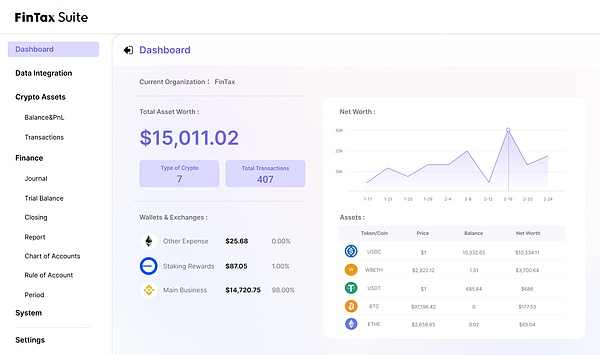Author:FinTax
News Overview
India's regulatory framework for cryptocurrencies continues to evolve, with the 2025 Budget introducing stricter reporting requirements and enhanced supervision on top of the 30% tax implemented in 2022. Section 115BBH of the Income Tax Act, 2022, formally brought crypto assets (VDA) into the tax system for the first time, but did not allow traders to offset losses against other income. The 2025 Budget's new Section 285BAA in the Income Tax Act further expanded the scope of supervision, requiring specific institutions to report crypto transactions within a specified time limit. At the same time, the government expanded the VDA definition to cover all crypto assets based on distributed ledger technology to accommodate industry development. These changes coincide with Bitcoin's rise due to positive news about the US election, but the market still faces regulatory uncertainty and volatility risks.
News source:
https://bitnewsbot.com/india-expands-crypto-oversight-new-tax-rules-and-reporting-requirements-coming-in-2025/


1. Evolution of India's Crypto Regulatory System
India's cryptocurrency regulatory policy has evolved from strict restrictions to gradual adjustments. In the early days, the Reserve Bank of India (RBI) was highly skeptical of cryptocurrencies and even issued a notice in 2013 warning investors of the speculative risks of crypto assets. In 2018, the Reserve Bank of India further banned banks from trading with crypto-related companies, attempting to restrict market development through financial means. However, the ban was strongly opposed by industry organizations and market participants, and was ruled unconstitutional by the Supreme Court of India in 2020.
The 2022 Budget for the first time included cryptocurrencies and other crypto assets under legal regulation and established a series of tax policies, including a 30% capital gains tax on crypto asset (VDA) income and a 1% withholding tax (TDS) on transaction amounts. Although the introduction of this tax system provides a legal basis for tax compliance to a certain extent, its high tax burden and strict regulatory requirements are still controversial.
The introduction of the 2025 Budget did not make fundamental reforms to the current tax system, but only strengthened supervision in crypto tax declaration and information disclosure, which is scheduled to take effect in April 2026.
2. What do the new tax rules mean?
Despite increasingly relaxed regulations in several jurisdictions around the world, India still maintains the world's most stringent crypto tax regime. Although the 2025 Budget and the revised Income Tax Act have made adjustments to the tax rules, they have not changed the overall situation of the current restrictions on cryptocurrency trading. Currently, India imposes a 30% tax on crypto asset gains, which is an extreme rate globally. In addition, the tax system does not allow investors to deduct losses or operating costs, which has led many crypto businesses and investors to move to more friendly jurisdictions. The 2025 Budget also further expanded the definition of "crypto assets" (VDA) to include all crypto assets based on blockchain technology in the tax category. However, the definition still does not classify different types of crypto assets, and does not distinguish between their technical uses and economic attributes, leading to greater uncertainty in regulatory compliance.
In addition, the Income Tax Act imposes stricter penalties on undeclared VDA, classifying it as "undeclared income" and imposing a fine of up to 70% without providing any exemption or relief policy. This penalty reflects the Indian government's high-pressure attitude towards crypto assets, and more importantly, as mentioned earlier, the Indian government's definition of crypto assets is too broad, resulting in Indian crypto users facing excessive tax burdens.
In such a harsh tax environment, large-scale relocation of local Indian crypto companies has become a trend, and the continued growth of crypto market trading volume reflects the huge divergence between regulatory policies and market realities. Despite the government's attempts to curb the crypto market through high tax policies, the younger generation of investors in India still regard crypto assets as a primary or auxiliary source of income.
3. Impact on investors and the market
India's stringent tax policies have undoubtedly made it more difficult for crypto companies to operate in the local market. Although the crypto industry remains relatively vibrant in India, the more friendly regulatory environment in other jurisdictions is attracting companies to relocate. Currently, the Indian crypto market still benefits from the rise in crypto asset prices. Some studies predict that by 2035, the size of India's crypto market is expected to grow from the current $2.5 billion to $15 billion. However, overly stringent regulations may prompt capital in the Indian crypto industry to flow to other countries, resulting in reduced tax revenue for the Indian government, limited market innovation, and affecting India's competitiveness in the global digital financial ecosystem.
Another major challenge for the Indian crypto market is compliance complexity and legal uncertainty. Although the Indian government proposed to formulate a comprehensive crypto regulatory framework as early as 2021, the bill tended to ban Bitcoin and altcoins and promote the digital currency (CBDC) of the Central Bank of India, which ultimately led to the delay in the implementation of the bill. In this regulatory environment, market players face policy changes and compliance risks, which hinder long-term investment. Companies and investors are worried that they may suffer from sudden government crackdowns or additional tax burdens in the future, which will affect business decisions and market vitality.
In short, although the Indian government has strengthened supervision on the grounds of financial stability, the strict tax system and vague regulatory framework are seriously restricting the innovation ability of the Indian crypto market and affecting India's global competitiveness. The Indian government needs to find a balance between investor protection and market development, reduce tax rates, clarify asset classification, and reduce legal uncertainty to enhance market confidence and attract more capital. If India continues to maintain its current regulatory stance, it may miss economic opportunities in the blockchain and digital finance sectors. On the contrary, India may still become an important player in the global crypto market.
 Weiliang
Weiliang







